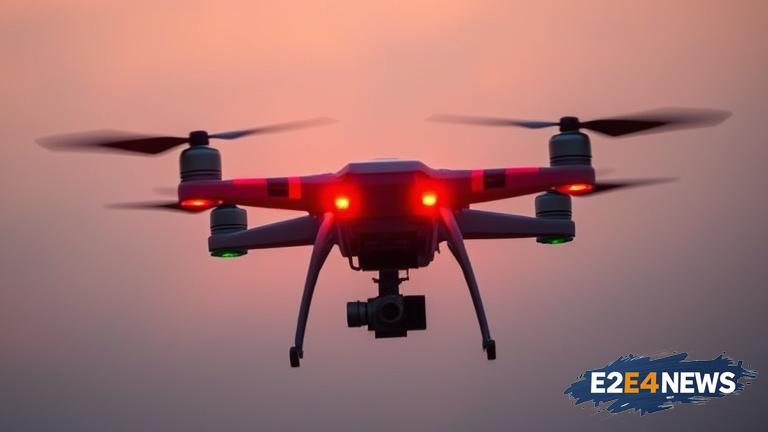In a major breakthrough for India’s defense sector, Pune-based Quantum Tech has successfully developed and deployed fiber optic FPV drones, significantly bolstering the Indian Army’s surveillance and reconnaissance capabilities. This cutting-edge technology has been designed to provide real-time video feed, enabling the army to respond swiftly and effectively to emerging threats. The fiber optic FPV drones have undergone rigorous testing and have demonstrated exceptional performance, with the ability to transmit high-definition video over long distances. The Indian Army has expressed satisfaction with the drones’ capabilities, citing their potential to revolutionize military operations. Quantum Tech has also established joint drone labs with the army, facilitating collaborative research and development of drone technology. These labs will serve as a hub for innovation, enabling the development of customized drone solutions tailored to the army’s specific needs. The partnership between Quantum Tech and the Indian Army is expected to yield significant benefits, including enhanced border surveillance, improved disaster response, and increased operational efficiency. The use of fiber optic FPV drones is also anticipated to reduce the risk of casualties, as they can be deployed in high-risk areas without putting human lives in danger. Furthermore, the joint labs will provide a platform for the development of new drone-based applications, such as cargo transport, medical evacuation, and environmental monitoring. The Indian government has welcomed the initiative, recognizing the potential of drone technology to transform the country’s defense and security landscape. The development of fiber optic FPV drones and joint drone labs is a testament to India’s growing capabilities in the field of defense technology, with the country increasingly seeking to indigenize its military equipment and reduce dependence on foreign suppliers. The partnership between Quantum Tech and the Indian Army is also expected to have a positive impact on the country’s economy, with the potential to create new job opportunities and stimulate growth in the defense sector. As India continues to modernize its military, the use of advanced technologies such as fiber optic FPV drones is likely to play an increasingly important role. The Indian Army has already begun to integrate the drones into its operations, with plans to deploy them in various theaters, including the borders with Pakistan and China. The drones’ ability to operate in challenging environments, including high-altitude areas and dense forests, makes them an ideal solution for India’s diverse geographical landscape. The development of fiber optic FPV drones and joint drone labs is a significant milestone in India’s defense modernization journey, marking a major step forward in the country’s efforts to enhance its military capabilities. With the Indian government committed to investing in defense technology, the future of drone development in the country looks promising, with potential applications extending beyond the military to areas such as agriculture, infrastructure monitoring, and disaster response. As the use of drones becomes increasingly widespread, India is poised to emerge as a major player in the global drone market, with companies like Quantum Tech at the forefront of innovation. The partnership between Quantum Tech and the Indian Army serves as a model for public-private collaboration, demonstrating the potential for industry and government to work together to drive innovation and achieve common goals. The development of fiber optic FPV drones and joint drone labs is a shining example of India’s growing capabilities in the field of defense technology, with the country increasingly seeking to assert its position as a major military power. With the Indian Army’s capabilities enhanced by the use of advanced drone technology, the country is better equipped to respond to emerging threats and protect its national interests. The future of India’s defense sector looks bright, with the potential for further innovation and collaboration between industry and government.





